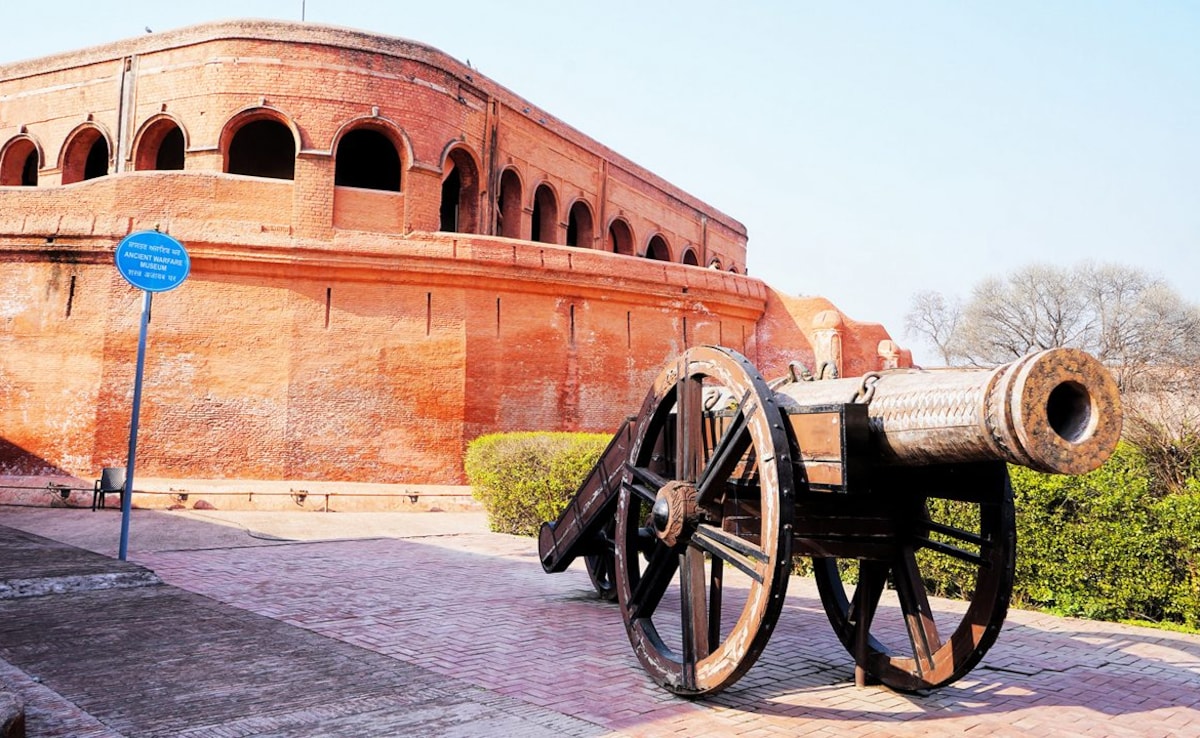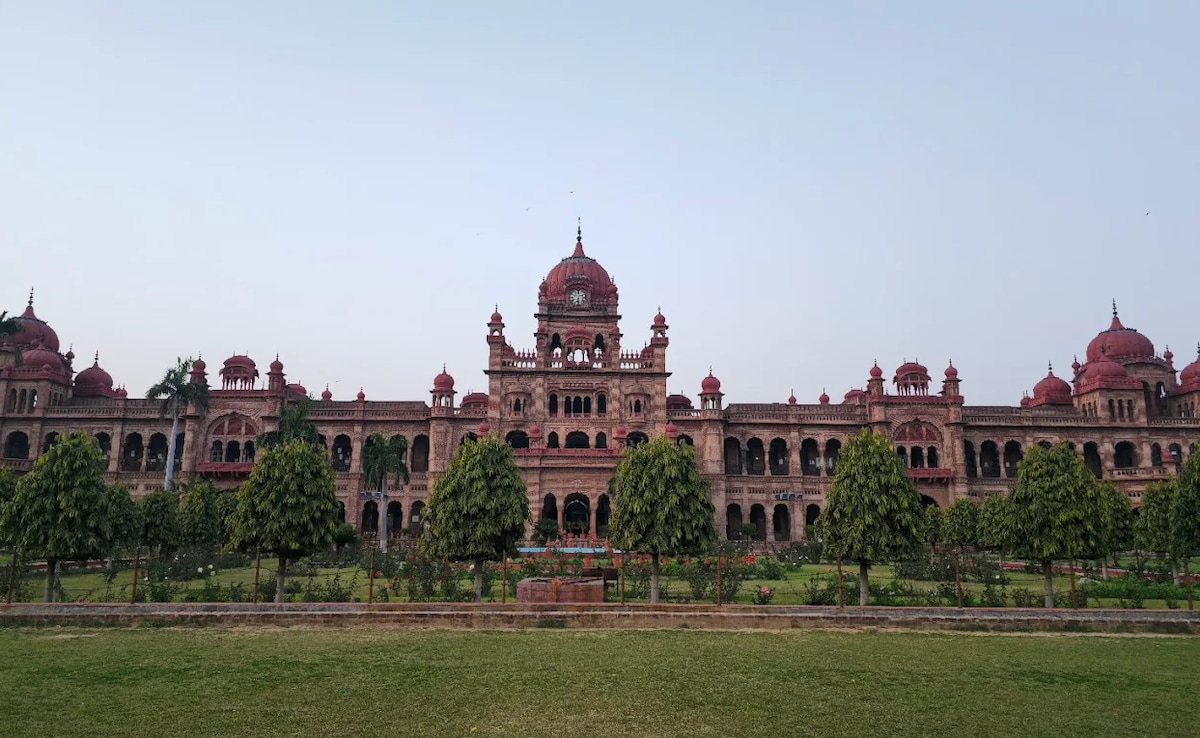
There are cities that you visit, and then there are cities that speak to you. Amritsar belongs to the latter. It is full of history, faith and stories that have shaped generations. The best way to experience it is not from a car or tour bus, but by walking through its old lanes. These heritage walks are not about ticking off monuments, they are about soaking in the soul of the city. You will see colonial-era buildings, colourful street corners, and places where everyday life blends beautifully with the past.
Whether you are curious about history, looking for meaningful travel, or simply want to slow down and explore, walking through Amritsar feels like stepping into its story.
Also Read: 9 Unique Things To Do In Amritsar That Go Beyond The Golden Temple
The Rich History Of Amritsar:
Founded in 1577 by Guru Ram Das, the fourth Sikh Guru, Amritsar grew around the sacred pool known as Amrit Sarovar, which gave the city its name. Over centuries, it became a spiritual and cultural hub, especially for Sikhism.
- Guru Arjan Dev completed the construction of the Golden Temple in 1604, installing the Guru Granth Sahib at its heart.
- The city saw the rise of Sikh Misls, the rule of Maharaja Ranjit Singh, and later, British colonial influence.
- It witnessed defining moments like the Jallianwala Bagh massacre in 1919 and the trauma of Partition in 1947. Today, Amritsar stands as a symbol of resilience, faith, and heritage.
Also Read: Amritsar Travel Guide: The Ultimate City Break For Food, Culture, And History

In Picture: Gobindgarh Fort
Photo Credit: Incredible India
7 Time-Honoured Landmarks That Define Amritsar's Spirit:
1. Golden Temple (Sri Harmandir Sahib):
An ethereal sanctuary bathed in gold, the gurdwara is surrounded by the sacred Amrit Sarovar. Its langar welcomes all with warm meals and a message of equality.
2. Jallianwala Bagh:
This place is a haunting memorial to the 1919 massacre, where bullet-scarred walls and the Martyrs' Well bear witness to a tragic chapter of India's freedom fight.
3. Partition Museum:
Located in the heart of Town Hall, this museum preserves deeply personal stories from 1947 through letters, artefacts, and tearful oral histories.
4. Gobindgarh Fort:
Once a mighty Sikh military bastion, it is now a lively cultural hub with museums, live performances, and food courts that echo with Punjabi pride.
5. Serai Amanat Khan:
This Mughal-era marvel glows with intricate blue tilework. Built by the artist behind the Taj Mahal's script, this place is quietly tucked in Amritsar's outskirts.
6. Toot Sahib Gurudwara:
Nestled beside a sacred mulberry tree, this serene gurudwara honours visits by Sikh gurus and offers a peaceful spiritual escape from the city's bustle.
7. Khalsa College:
A majestic blend of Mughal and colonial architecture, the college stands as a beacon of Sikh education and cultural resurgence since the 1890s.
Also Read: This Hotel In Punjab Was Named Among The World's Most Beautiful Hotels Of 2025

In Picture: Khalsa College
Photo Credit: Google Image
Here Are 6 Things To Keep In Mind While Exploring Amritsar's History:
1. Travel Smart:
Large bags can become cumbersome during walking tours and temple visits. Opt for a sling or compact backpack to keep essentials close while staying mobile.
2. Practice Ritual Cleanliness:
It is customary to wash your hands and feet before entering gurudwaras. Many shrines offer water basins or foot wash areas at the entrance for this purpose.
3. Follow Religious Etiquette:
Smoking, alcohol, and chewing gum are strictly prohibited in places of worship. These acts are considered disrespectful and may result in being asked to leave.
4. Respect Sacred Spaces:
Avoid touching religious artefacts, altars, or interrupting prayers and rituals. Observing quietly from a distance preserves the sanctity and spiritual flow of the space.
5. Observe Spatial Traditions:
Most temples and gurudwaras encourage walking clockwise around sacred pools and sanctums, symbolising alignment with the divine and spiritual discipline.
6. Take Receipts:
If you are making donations or purchasing souvenirs at heritage sites, always collect and preserve receipts. They may be needed for entry validation, returns, or customs declarations.
Also Read: Chandigarh Travel Guide: The Coolest City In North India You're Probably Sleeping On

In Picture: Jallianwala Bagh
Photo Credit: Pexels
How Long Does It Take To Explore Amritsar:
1. Quick Overview Of Major Sites - 1 To 2 Days
If you are short on time, a one or two-day itinerary can still cover the essentials. Start with a sunrise visit to the Golden Temple, followed by a walk through Jallianwala Bagh and the Partition Museum. In the evening, head to the Wagah Border for the flag-lowering ceremony.
Day two can include Gobindgarh Fort, Durgiana Temple, and some street shopping at Hall Bazaar. You will get a taste of Amritsar's spiritual and historical depth, along with its vibrant street life.
2. Deeper Cultural Experience - 3 Days
Three days allow you to slow down and soak in the city's rhythm. In addition to the major landmarks, you can explore lesser-known spots like Toot Sahib Gurudwara, Serai Amanat Khan, and Khalsa College. Add in a heritage walk, a food trail featuring kulchas, lassi, and jalebis, and maybe even a visit to a local artisan's workshop. This duration lets you engage with Amritsar's layered identity, its architecture, cuisine, and community.
3. Half-Day Heritage Walks - 2 To 3 Hours
These curated walks typically span 2 to 3 hours, covering 10 to 14 key sites within the old city. Starting from the Town Hall, they wind through historic katras, chowks, gurudwaras, and colonial-era buildings, ending near the Golden Temple. It is ideal for those who want a concentrated dose of history and storytelling without committing to a full-day itinerary.
Also Read: Chandigarh Travel Guide: The Coolest City In North India You're Probably Sleeping On

In Picture: Toot Sahib Gurudwara
Photo Credit: Discover Sikhism
Best Mode To Travel Around Amritsar:
- Cycle rickshaws and e-rickshaws: They are ideal for short distances and navigating narrow lanes.
- Auto-rickshaws: They are perfect for budget-friendly transportation.
- Cabs: It works well for longer distances or if travelling with family.
- Walking: The best way to explore the old city and heritage zones, as most of the landmarks are within a 2-3 km radius.
Amritsar's historical walks are all about feeling the pulse of a city that continues to evolve while honouring its past. So, walk slow, listen closely, and let the city show you why history is best experienced on foot.
Track Latest News Live on NDTV.com and get news updates from India and around the world

